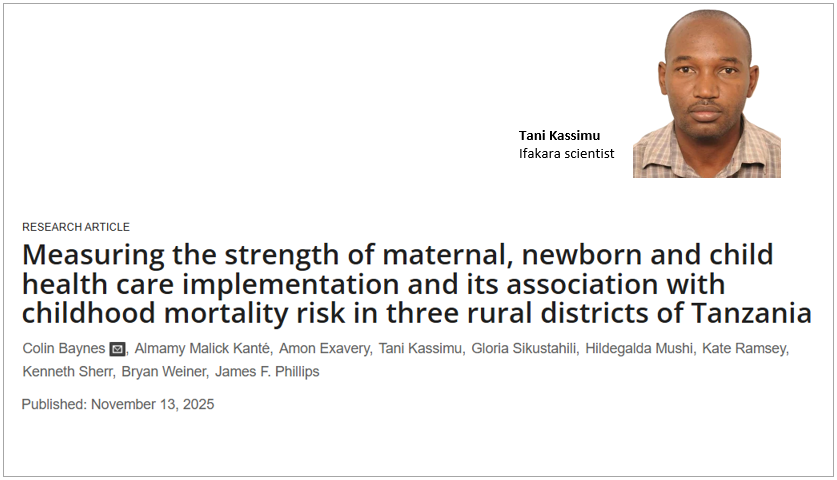
CHILD HEALTH: Stronger facilities key to protecting young lives

Fresh evidence from a study in rural Tanzania is urging governments to reconsider how they safeguard children’s health, as findings show that stronger primary healthcare is key to prevent many early childhood deaths.
The study, conducted across Kilombero, Rufiji, and Ulanga districts, found that better-prepared health facilities—able to provide reliable maternal, newborn, and child health (MNCH) services—were linked to improved child survival.
Published on PLOS Global Public Health last week on November 13, the findings come ahead of World Children’s Day, observed globally on 20 November, underscoring the crucial role of primary healthcare in protecting young lives.
Why this matter
Tanzania has made progress in reducing child mortality, but preventable deaths remain a concern, especially in rural areas where families rely heavily on local clinics.
Children in rural areas continue to face preventable risks, and without strong, well-equipped, and well-staffed primary health facilities, these deaths persist. Strengthening MNCH services is not just a medical priority—it is a matter of equity, ensuring that all children, regardless of where they are born, have a fair chance to survive and thrive.
Routine care can save lives
The study examined whether stronger MNCH services in rural Tanzania helped children survive. Using data from 2011 to 2015, the researchers measured readiness of health facilities in providing MNCH services with information on how families used those services, then linked this to child survival outcomes.
The results showed that children in areas served by stronger facilities had significantly higher survival odds over the five-year period. This simply means, well-prepared facilities and consistent delivery of preventive and sick-child care are associated with lower child mortality.
Gaps in delivery care
The study did not find a strong link between the quality of intrapartum care (care during childbirth) at smaller clinics and child survival. Researchers note this could be because complicated births often occur in hospitals rather than local dispensaries, making it difficult to measure the impact at community level.
A matter of fairness
The study underscores a long-standing concern: many preventable child deaths occur not due to rare complications, but because primary healthcare systems are too weak to provide basic, reliable support.
The study emphasizes the need for sustained investment in primary health care services, including antenatal, postnatal, preventive, and sick-child care, and highlights the value of routine health system data to track progress and strengthening MNCH services.
A timely reminder for children’s rights
As countries reflect on this year’s World Children’s Day theme, Listen to children: my day, my rights, these findings highlight the urgent need for governments and communities to strengthen primary health care systems — ensuring well-staffed, well-equipped facilities and reliable maternal and child health services so that every child has an equal chance to survive, grow and thrive.
According to the researchers, this study findings offers guidance for health system managers and policymakers to improve planning, resource allocation, and implementation adjustments, that maximize the impact of health system strengthening on population health.
Ifakara contributes to the study
Researchers from Ifakara Health Institute played a key role in this study, with Tani Kassimu, Gloria Sikustahili, and Hildegalda Mushi contributing to data curation for the study.
The study was led by Colin Baynes from Columbia University (USA), with supervision from Kate Ramsey of Scope Impact (USA), and Kenneth Sherr, Bryan Weiner, and James Phillips, all from Columbia University. Other contributors included Almamy Malick Kanté from Johns Hopkins University (USA) and Amon Exavery from Pact International (Tanzania).
Read the publication here.
